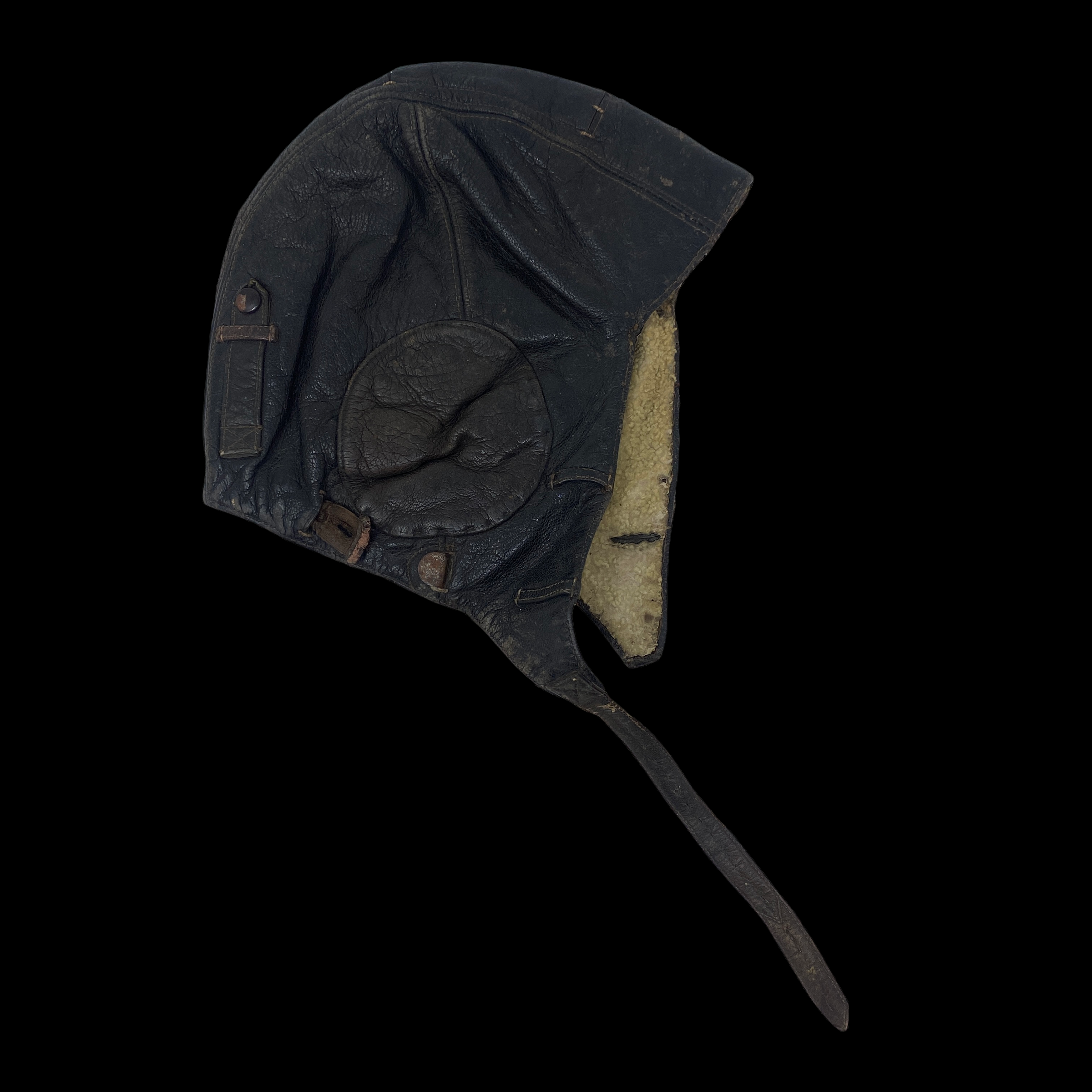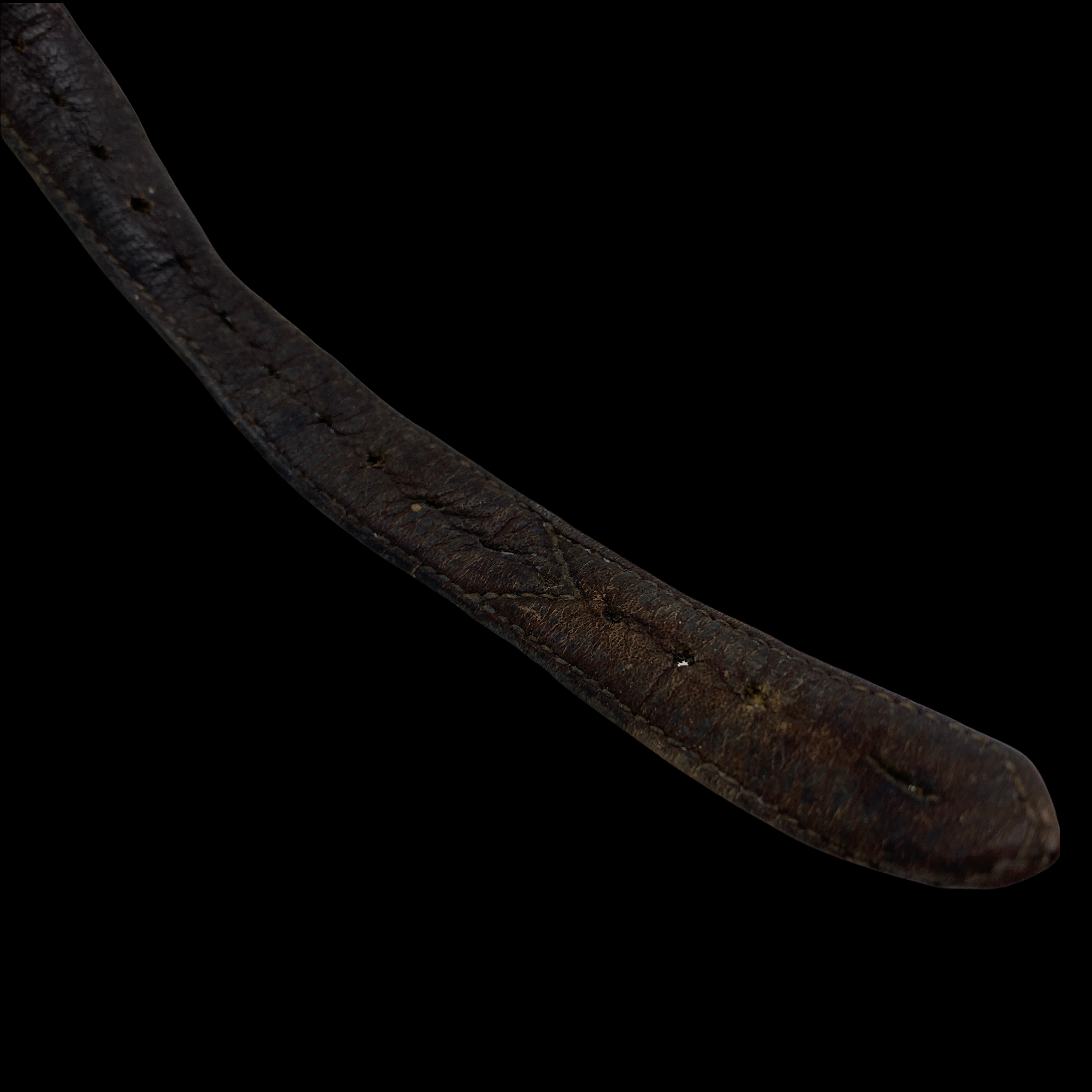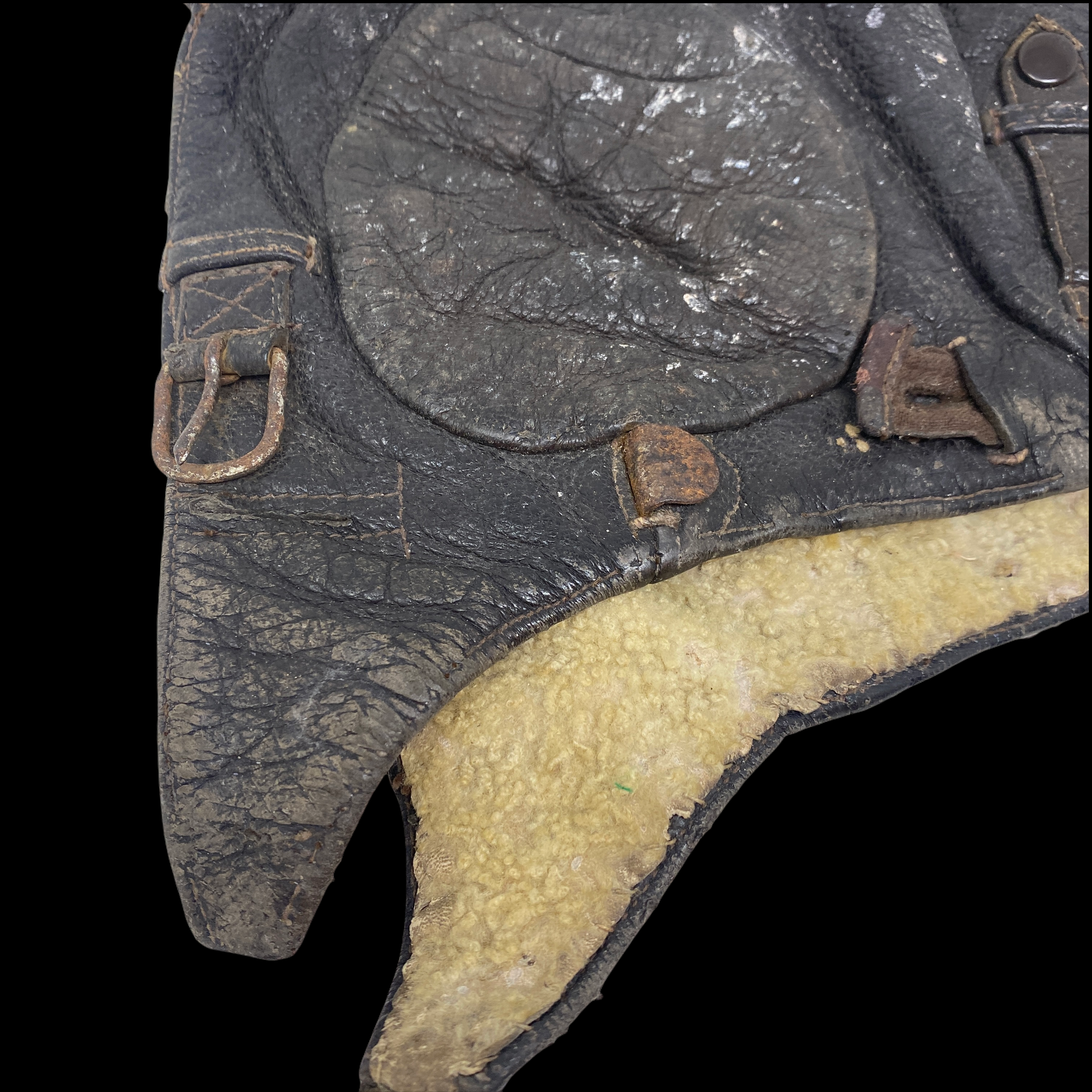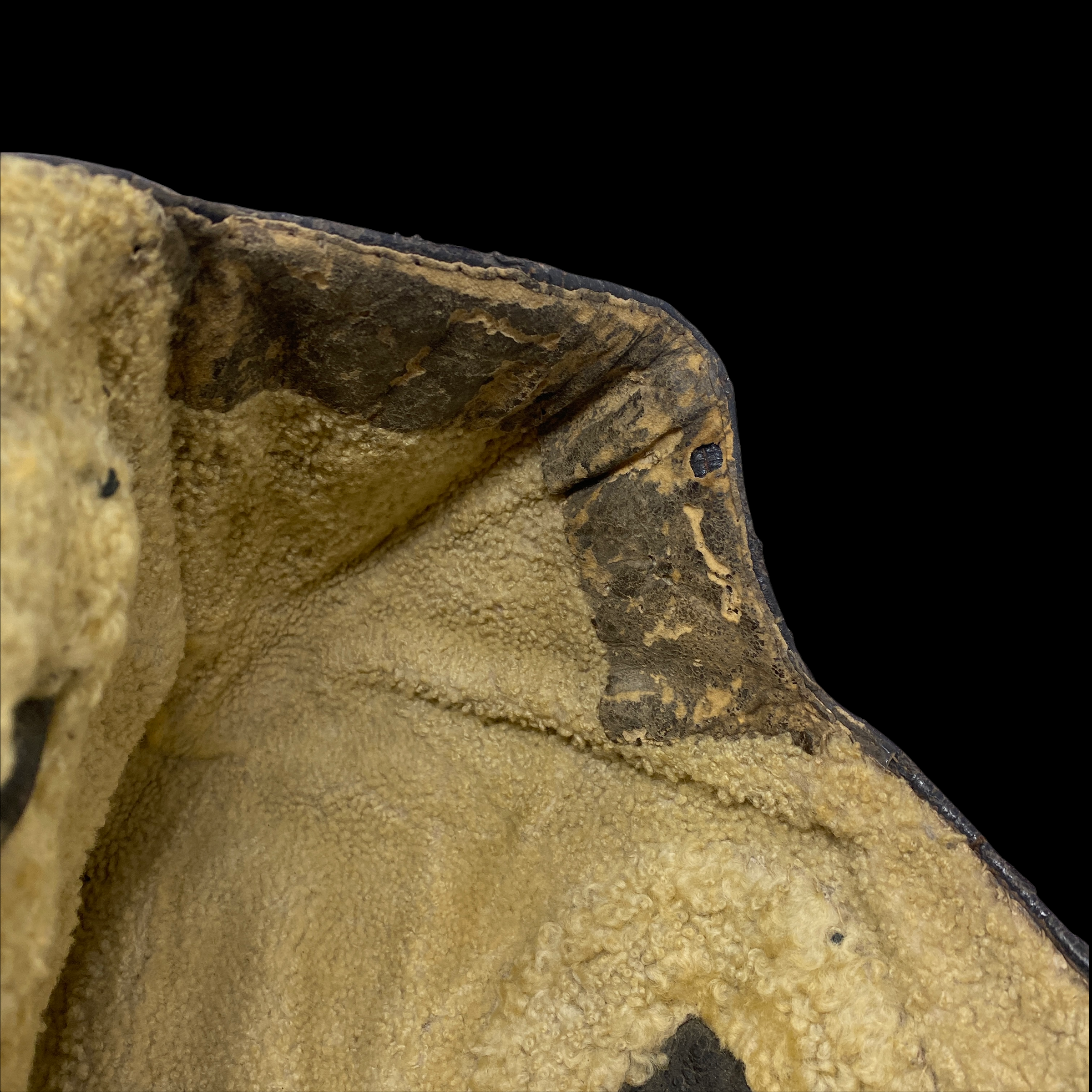German WWII Luftwaffe Pilot Captured Leather and Wool Flying Helmet

































German WWII Luftwaffe Pilot Captured Leather and Wool Flying Helmet
This original WWII German Luftwaffe Pilot leather flying helmet shows incredible wear and use. This WWII pilot helmet comes from a previous war collection in Italy and is believed to have been captured by a downed Luftwaffe pilot and kept as a war souvenir. The inside of the flying helmet is lined with warming wool and is in incredible condition given its age. The leather strap shows wear as it was wrapped around the pilot’s head.
Five years after introducing the world to the blitzkrieg, in concert with fast-moving panzers, the German air force was being hunted to destruction. In 1939 the Luftwaffe was the world’s strongest air force with modern equipment, well-trained aircrews, and combat experience. However, from its secretive birth in the early 1930s, it was doctrinally a tactical air arm mainly intended to support the German army. Long-range strategic bombers were largely shunned in favor of single- and twin-engine bombers and attack aircraft capable of functioning as ‘‘flying artillery.’’ The concept worked extremely well in Poland, France, Belgium, and elsewhere in 1939–40. It also achieved sensational success in the early phase of Operation Barbarossa, the invasion of Russia in 1941 (German Air Force ww2). However, during the Battle of Britain and subsequently in Russia, Germany paid for its lack of multi-engine bombers capable of destroying enemy industry.
The dominant figure in the Luftwaffe was Reichmarshall Hermann Göering. A noted World War I pilot and leader, he was also an early political supporter of Adolf Hitler and therefore gained full control of German aviation when the Nazis came to power. However, Göering proved out of his depth as a commander in chief, and his air force suffered under his often irrational leadership. Göering demanded control of everything connected with aviation, and got it: antiaircraft defenses, paratroops, POW camps for Allied airmen, even a Luftwaffe forestry service. Ten percent of the Luftwaffe’s strength was committed to ground units, including the superbly equipped Hermann Göering Panzer Division, which fought with distinction in Africa, Italy, and Russia. Some Allied generals frankly considered it the best unit in any army of World War II.
Like the Anglo-American air forces, the Luftwaffe was built around the basic unit of the squadron (Staffel), equipped with nine or more aircraft. Three or four Staffeln constituted a group (Gruppe), with three or more Gruppen per Geschwader, or wing. German organization was more specialized than that of the RAF or USAAF, as there were Gruppen and Geschwadern not only of fighters, bombers, transport, and reconnaissance units of but dive-bomber, ground attack (mainly anti-armor), and maritime patrol aircraft.
Nomenclature can be confusing when comparing the Luftwaffe to the USAAF and RAF. Although the squadron label was common to all three, what the Germans and Americans called a ‘‘group’’ was an RAF ‘‘wing,’’ while an RAF ‘‘group’’ was essentially a Luftwaffe or USAAF ‘‘wing’’—an assembly of squadrons under one command. The American wing (RAF group) largely served an administrative function, whereas in the Luftwaffe and RAF it was a tactical organization.